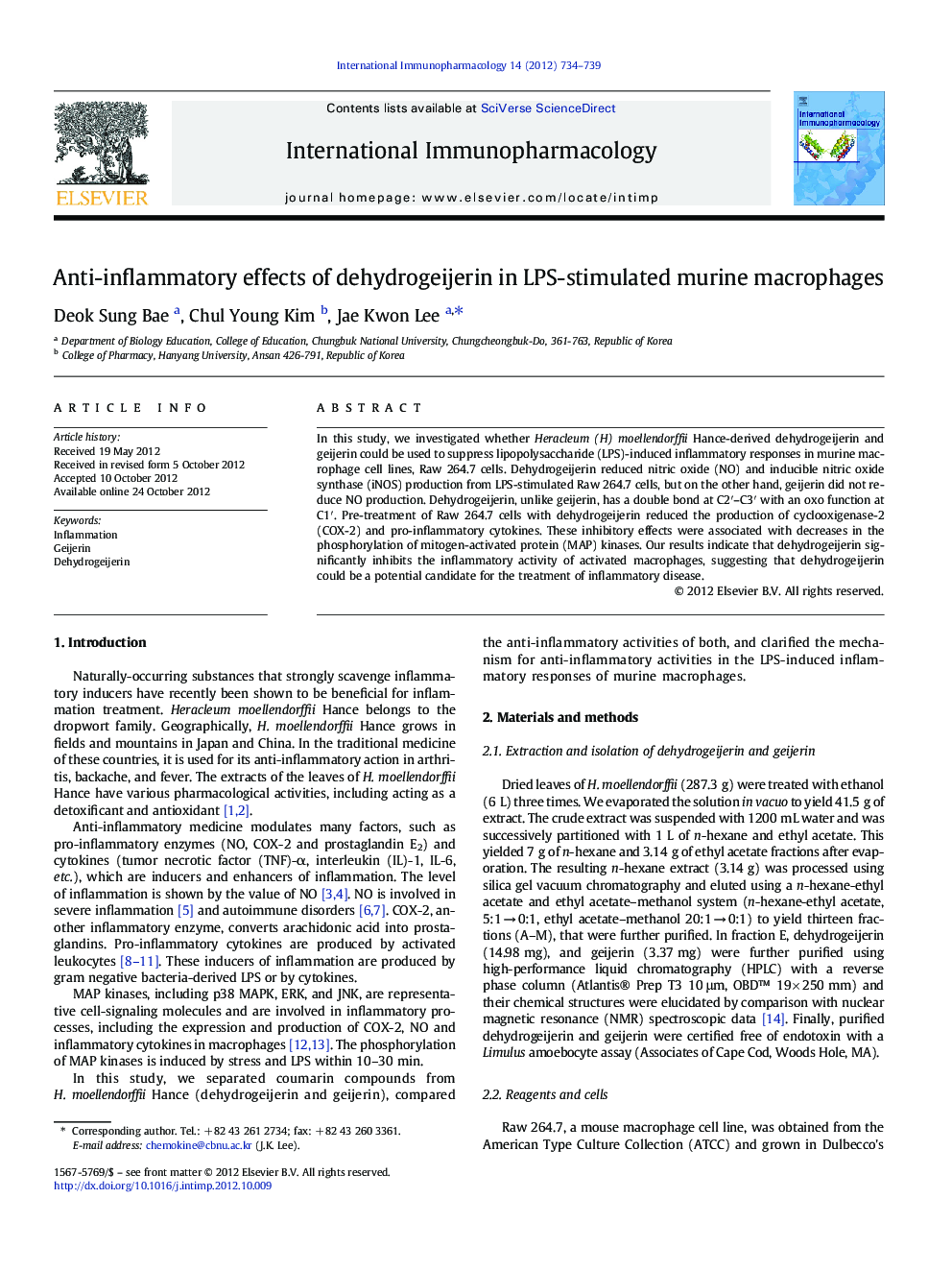| Article ID | Journal | Published Year | Pages | File Type |
|---|---|---|---|---|
| 5833642 | International Immunopharmacology | 2012 | 6 Pages |
In this study, we investigated whether Heracleum (H) moellendorffii Hance-derived dehydrogeijerin and geijerin could be used to suppress lipopolysaccharide (LPS)-induced inflammatory responses in murine macrophage cell lines, Raw 264.7 cells. Dehydrogeijerin reduced nitric oxide (NO) and inducible nitric oxide synthase (iNOS) production from LPS-stimulated Raw 264.7 cells, but on the other hand, geijerin did not reduce NO production. Dehydrogeijerin, unlike geijerin, has a double bond at C2â²-C3â² with an oxo function at C1â². Pre-treatment of Raw 264.7 cells with dehydrogeijerin reduced the production of cyclooxigenase-2 (COX-2) and pro-inflammatory cytokines. These inhibitory effects were associated with decreases in the phosphorylation of mitogen-activated protein (MAP) kinases. Our results indicate that dehydrogeijerin significantly inhibits the inflammatory activity of activated macrophages, suggesting that dehydrogeijerin could be a potential candidate for the treatment of inflammatory disease.
⺠We investigated whether dehydrogeijerin could be applied to suppress inflammation. ⺠Dehydrogeijerin was found to reduce NO, COX-2 and pro-inflammatory cytokines. ⺠p38 MAPK and JNK are involved in inhibitory effects of dehydrogeijerin. ⺠Dehydrogeijerin could be a potential candidate for treatment of inflammation.
